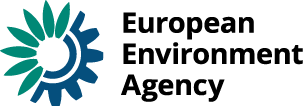Water
Wastewater Indicators
| Population with access to improved sanitation systems | % | 98.3 (2012) |
| WW volume collected | million m3/ year | 491.5 (2012) |
| WW Volume treated | million m3/ year | 487 (2012) |
Indicator 3 : Access to Sanitation
The indicator refers to the percentage of the population with access to facilities which hygienically separate human excreta from human, animal and insect contact. The improved sanitation systems are those installed in homes or in the immediate vicinity, for the evacuation of human feces (public sanitation network, septic tank, etc.). The definition of “improved sanitation system” provided by the Joint Monitoring Programme for Water Supply and Sanitation by the World Health Organization and UNICEF is: Connection to a public sewer, connection to a septic system, pour-flush latrine, access to a pit latrine, ventilated improved pit latrine.
Definitions
Availability of datasets for indicator calculation
| Availability of datasets for indicator calculation | |
| Why not |
Based on surveys and estimations and accumulated knowledge regarding the existing infrastructure |
Governance for data collection
| Administrative level collecting data | Central administration collects the data (ministry/specific department) |
| Frequency | Annually, Last data refer to 2016 |
| Name of the department responsible |
Water Quality Division, Water Authority |
| Name of the data provider |
Water Quality Division, Water Authority |
| Methodology for data collection | Surveys and estimation |
| Master plan for municipal |
Data management
| Information system | Thematic database | Electronic spreadsheet | No management system of data |
SDI
| Datasets are part of SDI |
Data quality
| Quality process | ||||
| Spatial resolution | Aggregated at national level | At coastal hydrological basin | Rural | Urban |
| Time series available |
1980 - 2016 |
|||
Data policy
| Csv | Excel | Xml | Word | Html | Access database, Mysql, Postgresql | Shapefile | Other | |
| Publicly availability | ||||||||
| How to access from outside | external network (web services or API) | File transfert (FTP) | Other | |||||
Data flows
| Is the dataset is relevant for reporting obligations | Plan Bleu | Medpol | NAP | UNSD | Other |
| OECD, EUROSTAT |
Indicator 4 : Municipal Wastewater Management
The indicator refers to the volume of municipal wastewater collected by public sewage networks, septic systems and cesspits, and the volume of wastewater treated in wastewater treatment plants. Here reference is made to primary (mechanical) treatment that removes part of the suspended solids, and secondary (biological) treatment that uses aerobic or anaerobic micro-organisms to decompose most of the organic matter and retain some of the nutrients (around 20 - 30 %). Tertiary (advanced) treatment removes the organic matter even more efficiently.
Definitions
Availability of datasets for indicator calculation
| Availability of datasets for indicator calculation | |
| Wastewater treatment plants |
Governance for data collection
| Administrative level collecting data | Central administration |
| Frequency | Annually, last data refer to 2016 |
| Name of the department responsible |
Water and Streams Division, MoEP |
| Name of the data provider |
Wastewater treatment plants |
| Methodology for data collection | Reporting and surveys |
| Master plan for municipal |
Data management
| Information system | Thematic database | Electronic spreadsheet | No management system of data |
SDI
| Datasets are part of SDI |
Data quality
| Quality process | ||||
| Spatial resolution | Aggregated at national level | At coastal region | At coastal city | At hydrological |
| Time series available |
1980 - 2016 |
|||
Data policy
| Csv | Excel | Xml | Word | Html | Access database, Mysql, Postgresql | Shapefile | Other | |
| Publicly availability | ||||||||
| How to access from outside | external network (web services or API) | File transfert (FTP) | Other | |||||
Data flows
| Is the dataset is relevant for reporting obligations | Plan Bleu | Medpol | NAP | UNSD | Other |
| OECD, EUROSTAT |
- Key documents
- documents
- Key links
- links


